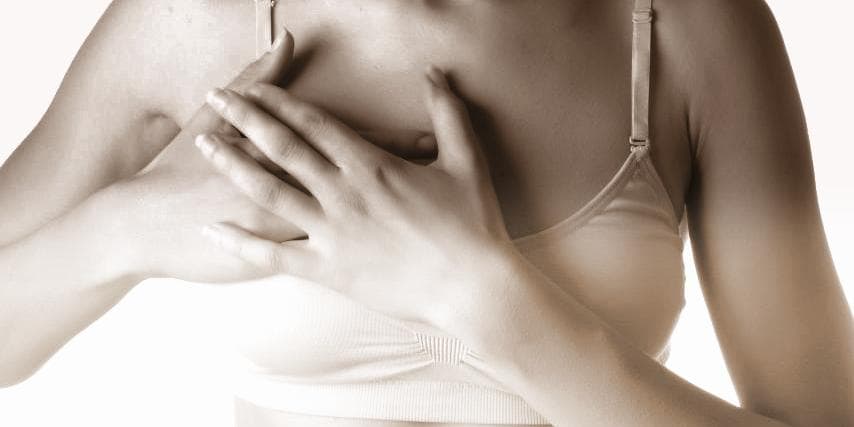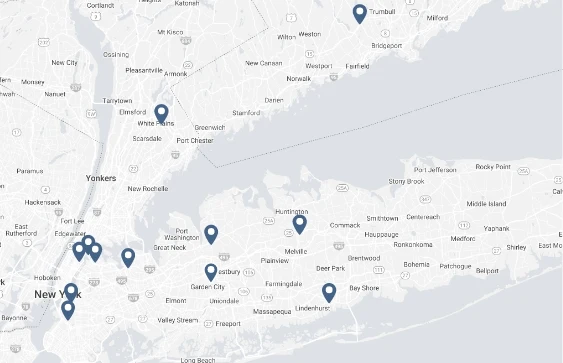A Q and A with Barry Douglas, MD, FACS
Q. Recently, several high profile personalities have had bilateral prophylactic mastectomies and breast reconstruction. Their decisions were based in part on genetic markers for breast cancer that has brought this type of surgery and breast reconstruction very much into the public eye.
What can be done to restore a woman’s breasts after this preventative surgery?
A. A woman may choose to have bilateral prophylactic mastectomies (the preventative removal of both breasts) because she has either: 1) a first degree family member with breast and/or ovarian cancer 2) a deleterious (disease-causig) mutation in the BRCA1 or BRCA2 gene 3) she may have a high-penetrance mutation in one of several other genes associated with breast cancer risk such as TP53 or PTEN.
The decision to have this surgery is never easy. Many women with these markers or strong family history have a great deal of anguish as they wonder if and when their breasts are going to declare war on them. This surgery does not mean that you are 100 percent immune from breast cancer. Although it greatly reduces the likelihood, some minute remnants of tissue always remains. For many women the peace of mind is important and worth the surgery. The breast reconstruction is often done immediately following the mastectomy or lumpectomy, when we work in concert with the breast surgeon. Some women elect to have the reconstruction as a delayed procedure.
Breast reconstruction can be divided into three groups: using autologous (your own tissue), implants (typically gel), or a combination of the two. Regardless of the techniques used very natural looking results can be achieved. For me, as a plastic surgeon, it’s one of the most gratifying and remarkable surgeries I do. We are restoring that which has been taken away. We are restoring the patient’s body image which is very important to their self-esteem and feeling complete again. There is a high degree of patient satisfaction because the breasts look and feel much like their own breasts. The women also are relieved because the specter of breast cancer has essentially been eliminated.
Q. Can you preserve a patient’s own nipple or do you have to reconstruct it as well?
A. In some cases we can preserve the nipple but this depends upon the breast surgeon. Nipple areolar complexes can be surgically created through ‘3D’ tattooing which can give theillusion of a real nipple.
Q. Where are the donor sites when reconstructing the breasts with the patient’s own tissue as opposed to an implant
A. The abdomen is by far the most common. Most women have an area of the lower abdomen where there is a pouch of excess skin and fat secondary to pregnancies. As a silver lining, the patient gets the benefit of a slimmer abdomen. The lower abdominal donor site is usually satisfactory for reconstructing both breasts. Other areas include the back or thigh.
Q. What is involved with implant reconstruction?
A. This usually involves a two-stage procedure, in which a tissue expander is placed at the time of surgery to expand the available breast skin that remains after the mastectomy. This is followed by a second stage where the expander is removed and replaced by an implant that is typically gel. Occasionally, the gel implant can be placed at the time of the mastectomies.
Q Is the surgery done in a hospital?
A. Yes, the initial mastectomy and reconstruction is performed as an inpatient. Subsequent stages can be done on an ambulatory basis.
Q. Are more women considering this surgery? Is it on the rise?
A. Yes. As genetic testing becomes more accurate, many more women are opting for this solution if their family history and test results make it right for them. It is great news that our ability to reconstruct natural looking and feeling breasts, either with implants or with autologous tissue, has become as fine-tuned as the genetic testing. We are able to reconstruct breasts that are, to a great degree, very close to the ones that she prophylactically removed. This proactive decision dramatically increases her odds against developing breast cancer.
Q. Does insurance pay for this procedure?
A. If insurance will pay for the mastectomy, it would be also likely to pay for the reconstruction. Although bilateral prophylactic mastectomies are not covered by all insurance companies, the percentage of insurance companies that cover it and the subsequent stages is increasing. Check with your provider if you’re considering these options.
If you have any further questions about breast reconstruction Dr. Douglas would be happy to hear from you. Send an email to blogs@lipsg.com.



